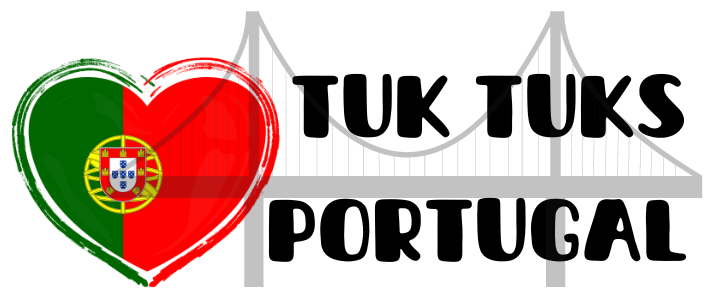The Future of Tuk Tuks: Innovations and Trends in Urban Mobility
Urban mobility is a critical aspect of modern cities, and finding efficient and sustainable transportation solutions is becoming increasingly important. Tuk Tuks, also known as auto rickshaws or three-wheeled taxis, have emerged as a popular mode of transportation in many urban environments. These compact vehicles offer a range of benefits, including affordability, maneuverability, and reduced traffic congestion. As cities continue to grow and mobility needs evolve, the future of Tuk Tuks holds exciting innovations and trends.
Introduction to Tuk Tuks and Urban Mobility
Tuk Tuks are three-wheeled vehicles that originated in Thailand and have since spread to many other countries around the world. These small and nimble vehicles provide an alternative mode of transportation in densely populated areas. Tuk Tuks typically accommodate two to three passengers, making them an ideal choice for short trips within urban centers.
What are Tuk Tuks? A Brief History
Tuk Tuks, originally called “Samlor” in Thailand, were first introduced in the 1950s as a means of transportation for locals and tourists. These vehicles were initially powered by two-stroke engines, but advancements in technology have led to the development of electric and solar-powered Tuk Tuks.
Importance of Urban Mobility in Today’s World
Urban mobility plays a crucial role in the overall development and sustainability of cities. Efficient transportation systems improve accessibility, reduce pollution, and enhance the quality of life for urban dwellers. Tuk Tuks offer a viable solution to the challenges faced by traditional transportation options, providing a more sustainable and cost-effective mode of travel.
The Growth of Tuk Tuks in Urban Environments
In recent years, Tuk Tuks have gained popularity in urban environments worldwide. These vehicles have successfully adapted to the specific needs and challenges of different cities, making them a preferred choice for both locals and tourists.
Adaptation of Tuk Tuks in Different Cities
Tuk Tuks have undergone various adaptations to suit the unique characteristics of different cities. For example, in densely populated cities with narrow streets, Tuk Tuks can navigate through tight spaces where larger vehicles cannot. In tourist destinations, Tuk Tuks provide an efficient and convenient mode of transportation for visitors to explore local attractions.
Benefits of Tuk Tuks as a Mode of Transportation
Tuk Tuks offer several advantages over traditional modes of transportation. Firstly, they are cost-effective, making them an affordable option for daily commuting. Secondly, their compact size allows them to maneuver through heavy traffic, reducing travel time. Additionally, Tuk Tuks produce lower emissions compared to larger vehicles, contributing to a cleaner and greener urban environment.
Technological Innovations in Tuk Tuks
The future of Tuk Tuks is closely tied to technological advancements that aim to improve their performance, efficiency, and sustainability.
Electric and Solar-Powered Tuk Tuks
To address environmental concerns and reduce dependency on fossil fuels, electric and solar-powered Tuk Tuks have been developed. These sustainable alternatives offer zero-emission transportation, reducing air pollution and noise levels in urban areas. Electric and solar-powered Tuk Tuks also benefit from lower operating costs, making them economically viable for drivers and operators.
Connected and Automated Tuk Tuk Technology
Advancements in connectivity and automation have the potential to revolutionize Tuk Tuk operations. Connected Tuk Tuks can provide real-time data on traffic conditions, optimize routes for efficiency, and enhance passenger safety. Furthermore, the integration of autonomous technology can offer self-driving Tuk Tuks, reducing the need for human drivers and further improving safety and efficiency.
Future Trends and Predictions for Tuk Tuks
The future of Tuk Tuks looks promising, with several trends and predictions that will shape their role in urban mobility.
Incorporating Tuk Tuks into Smart City Initiatives
As cities become smarter and more connected, Tuk Tuks can play a significant role in sustainable urban transportation. Integrating Tuk Tuks into smart city initiatives can involve implementing charging infrastructure for electric Tuk Tuks, integrating them into ride-sharing platforms, and incorporating them into multimodal transportation networks.
Expanded Use of Tuk Tuks in Urban Mobility Solutions
With the increasing demand for sustainable transportation options, Tuk Tuks are likely to be utilized in a broader range of urban mobility solutions. They can serve as last-mile connectivity options, providing convenient transportation for commuters traveling from transportation hubs to their final destinations. Additionally, Tuk Tuks can be integrated into public transportation systems, complementing existing bus and train networks.
Conclusion: The Role of Tuk Tuks in Tomorrow’s Urban Landscape
Tuk Tuks have emerged as a viable and sustainable mode of transportation in urban environments. Their compact size, affordability, and eco-friendly features make them an attractive choice for both individuals and cities aiming to improve mobility options. As technology continues to advance, the future of Tuk Tuks holds exciting possibilities, with innovations that will enhance their efficiency, sustainability, and integration into smart city initiatives.
